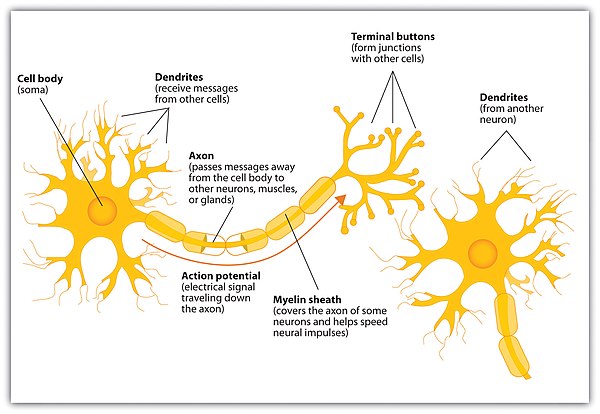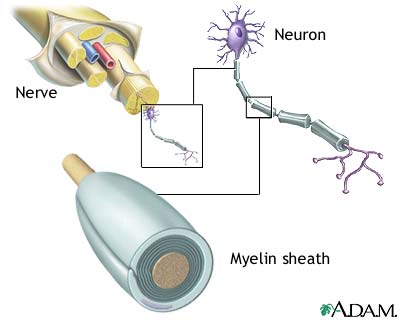Disclaimer: This page may contain affiliate links. We may earn a small commission for purchases made through links in this post, at no extra cost to you.
Neurostimulator to Repair Myelin Sheath:
A Game-Changer for MS Treatment
Introduction to the Neurostimulator to Repair Myelin Sheath
Today, let's talk about the neurostimulator to repair myelin sheath, an exciting development in the field of multiple sclerosis (MS) treatment. This breakthrough technology has recently been granted a Breakthrough Device Designation by the United States Food and Drug Administration (FDA). It’s a designation that was developed and launched in 2020.
One of the most exciting things about the neurostimulator is that it has the potential to revolutionize the way doctors approach your MS treatment. So, let's dive right in and explore the ins and outs of this device and its implications for MS as well as other autoimmune diseases.
The Neurostimulator and its Breakthrough Device Designation
The neurostimulator is a device developed by SetPoint Medical. It is a company that specializes in medical innovations. This device has been granted a Breakthrough Device Designation for its use in treating rheumatoid arthritis (RA) as well as relapsing-remitting multiple sclerosis or (RRMS). This designation recognizes the significant potential of the neurostimulator to improve the lives of individuals with these conditions.
Repairing the Myelin Sheath
and Reversing Symptoms
Up until now, treatments for MS have focused on slowing the progression of the disease, which is great. SetPoint Medical has chosen to come at it from a different angle; one of repair or remyelination. We’ve heard talk of this, however, this is the first time a company has decided to actually take this approach.
Studies have shown that the neurostimulator can slow down damage to the myelin sheath and, even more importantly, promote its repair. This is incredibly promising for individuals with MS, as a repaired myelin sheath can improve or even eliminate symptoms such as weakness in the legs, balance issues, cognitive issues, drop foot, and incontinence.
And the best part? These findings extend beyond MS to other autoimmune diseases like Crohn's disease and rheumatoid arthritis. This is so, so exciting!
Understanding the Neurostimulator
The neurostimulator is a tiny device, about the size of a small medicine capsule. Unlike other implantable devices, such as spinal cord stimulators, which Cir used to have, this nerve stimulator is less invasive.
It is implanted in the neck area on the vagus nerve. The procedure to implant it is relatively simple and can be done on an outpatient basis. It requires a small incision on the left side of the neck. The device is inserted and you’re done. Easy, peasy!
The device is powered by a small rechargeable battery, which can be wirelessly charged when necessary. Just like a spinal cord stimulator, healthcare professionals can adjust the electrical stimulation levels by using an app. This allows for remote management of the device to get the best therapeutic effects.
How the Neurostimulator Works
The vagus nerve, which is the longest nerve in the body, plays a crucial role in regulating various bodily functions. It reaches from the brain to several vital organs. The neurostimulator activates the vagus nerve using precise stimulation, which triggers the body's natural anti-inflammatory and immune-restorative pathways.
By doing so, it addresses inflammation-mediated autoimmune conditions, offering a new approach that focuses on restoring the body's immune system. According to SetPoint Medical:
“There is an urgent unmet medical need for therapies that can promote protection and functional restoration of damaged axons through remyelination in patients, and SetPoint’s therapeutic approach could offer new hope to people living with this chronic debilitating condition.”
Advantages of the Neurostimulator
There are several advantages to using the neurostimulator for patients as well as doctors compared to traditional multiple sclerosis treatments:
- Less invasive: The neurostimulator is minimally invasive, making it a less disruptive treatment option.
- Cost-effective: This innovative therapy has the potential to reduce healthcare costs associated with MS treatment.
- Simplified administration: Unlike medications, infusions, or self-administered shots, the neurostimulator doesn't require a daily routine, reducing the chance of missed doses.
- Reduced side effects: The neurostimulator offers a potentially safer alternative to traditional therapies, with fewer, if any, adverse effects.
- Easy recharge: The device's battery can be conveniently recharged wirelessly.
- Electrical Stimulation as a New Frontier: The use of electrical stimulation in medicine is continually expanding, and the neurostimulator represents a significant advancement in this field.
- Remyelination: It has the potential to reduce or improve damage to nerve cells, thus reducing the symptoms of MS.
Future Possibilities and Clinical Trials
While the neurostimulator shows immense potential, clinical trials specifically for MS are yet to begin. Currently, the ReSet RA study is being conducted, and its success may open the door for future studies focusing on MS treatment with the neurostimulator.
We are hopeful that this groundbreaking technology will continue to demonstrate its efficacy, providing a viable treatment option for individuals with multiple sclerosis. And of course, we hope it doesn’t stop there. There are so many autoimmune diseases out there, so why stop there…?? Let’s spread the love!
The neurostimulator to Repair Myelin Sheath In Conclusion
The development of a neurostimulator that can repair the myelin sheath is an incredibly promising advancement for individuals with multiple sclerosis. This breakthrough technology offers the potential to reverse symptoms and promote myelin repair.
This marks an important step forward in the treatment of this debilitating condition. As clinical trials progress and further research is conducted, the neurostimulator could become a game-changer for individuals with MS and other autoimmune diseases.
Hopefully studies will also show that the treatment works for other types of MS like Secondary Progressive and Primary Progressive MS, as well. We look forward to hearing about the results of these groundbreaking studies.
Dear Friends,
"Life in Spite of MS is a participant in the Amazon Services LLC Associates Program, an affiliate advertising program designed to provide a means for sites to earn advertising fees by advertising and linking to Amazon.com. We're also part of the Ebay Partner Network, another affiliate program."
We'd also like you to know it doesn't cost one cent more when you click through the links here on our blog. Not one single penny. And we will make a little extra cash when you do click through. We'll be ever so appreciative. You also have our word that we'll only link to things that we would use ourselves, (or wish we could have or use).
Sincerely,
Cir & Akrista
You are reading original content written by Akrista or Cir L'Bert of Life in Spite of MS. If you enjoyed reading this blog, please consider following us on Facebook, Twitter, Pinterest, and Instagram. See you there!
Privacy Policy ~ Advertising Policy ~ Disclaimer ~ Contact Us ~ About Us



New! Comments
Have your say about what you just read! Leave me a comment in the box below.